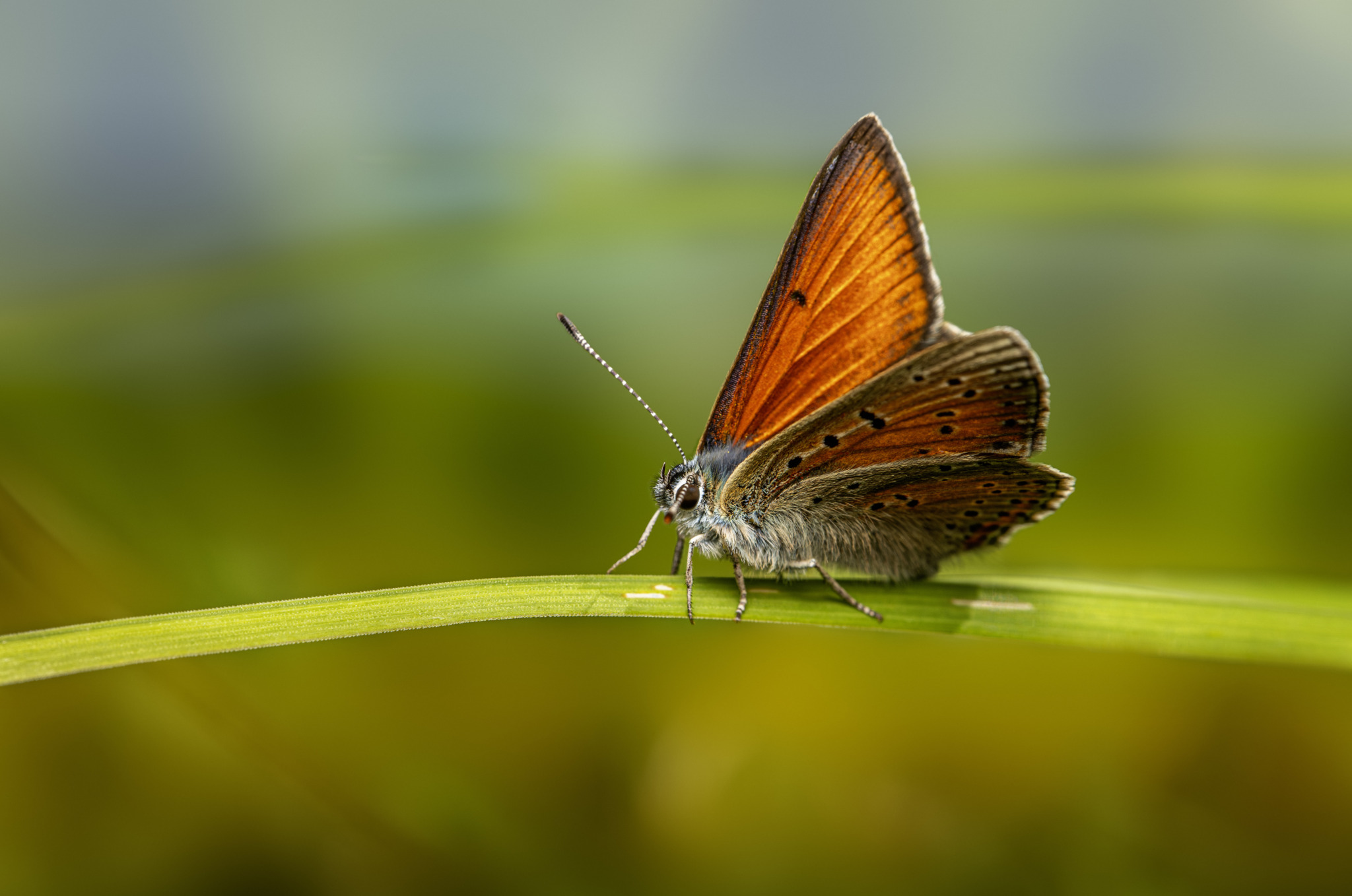The Purple-Edged Copper (Lycaena hippothoe) emerges as a captivating jewel amidst the tapestry of nature, captivating enthusiasts and researchers alike with its exquisite beauty and intriguing life history. This review aims to illuminate the ecological intricacies, behavioral adaptations, and conservation significance of Lycaena hippothoe, highlighting its role as a symbol of biodiversity and ecological resilience.
Lycaena hippothoe, commonly known as the Purple-Edged Copper, belongs to the family Lycaenidae, a diverse group of butterflies renowned for their dazzling colors and intricate wing patterns. Endemic to various regions of Europe and Asia, this charismatic species inhabits a range of habitats, including grasslands, meadows, and woodland clearings.
One of the most striking features of the Purple-Edged Copper is its vibrant hues and delicate wing markings. Adorned with iridescent purples, oranges, and blacks, its wings mesmerize observers, reflecting sunlight like stained glass windows in a woodland cathedral. These intricate patterns serve both aesthetic and functional purposes, aiding in camouflage and predator avoidance.
Ecologically, Lycaena hippothoe plays a vital role as a pollinator, contributing to the reproductive success of numerous plant species within its habitat. By sipping nectar from flowers with its proboscis, it facilitates cross-pollination and the production of seeds, thereby fostering plant diversity and ecosystem resilience.
The life cycle of the Purple-Edged Copper is a testament to the marvels of metamorphosis. Beginning as tiny eggs laid on host plants such as Rumex spp. (dock), its larvae hatch and undergo several instars before pupating into chrysalides. Finally, emerging as adult butterflies, they embark on a quest for nectar and mates, perpetuating the cycle of life.
Behaviorally, Lycaena hippothoe exhibits fascinating adaptations suited to its ecological niche. Males engage in territorial behaviors, patrolling their territories and engaging in aerial displays to attract females. Courtship rituals involve intricate fluttering and pheromone release, culminating in mating and the continuation of the species.
Despite its enchanting beauty and ecological importance, the Purple-Edged Copper faces numerous threats to its survival. Habitat loss, pesticide use, and climate change pose significant challenges to populations across its range, leading to declines in abundance and distribution.
Conservation efforts aimed at protecting Lycaena hippothoe encompass habitat restoration, establishment of protected areas, and community-based initiatives. By raising awareness about the importance of butterflies and their habitats, engaging in citizen science projects, and supporting sustainable land management practices, we can strive to safeguard the future of this enchanting species.
In conclusion, the Purple-Edged Copper (Lycaena hippothoe) serves as a symbol of resilience and beauty in the natural world. Through our collective efforts to conserve its habitats and mitigate threats, we can ensure that future generations will continue to marvel at the elegance and wonder of this extraordinary butterfly.
Views: 46
Subscribe to the newsletter:
